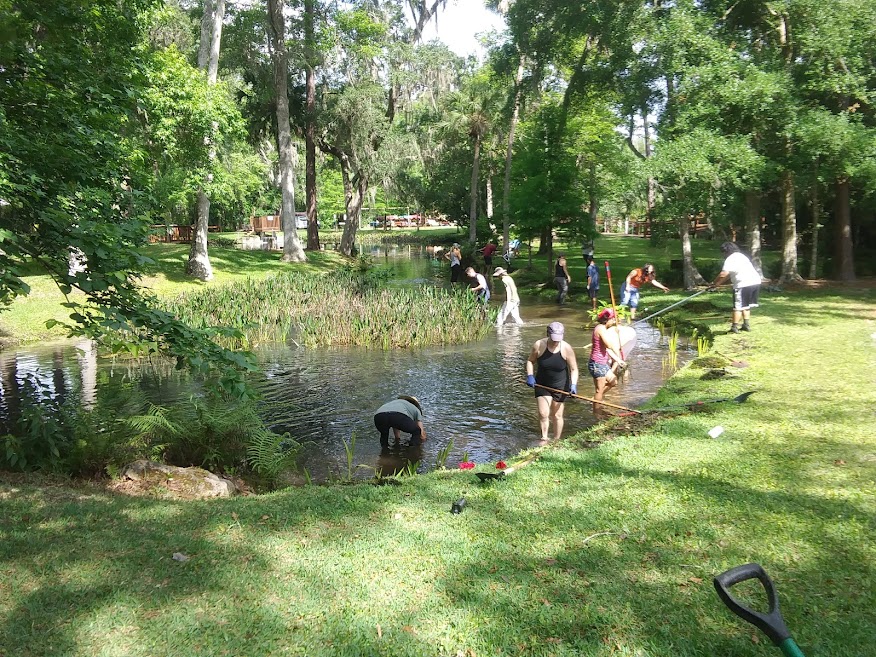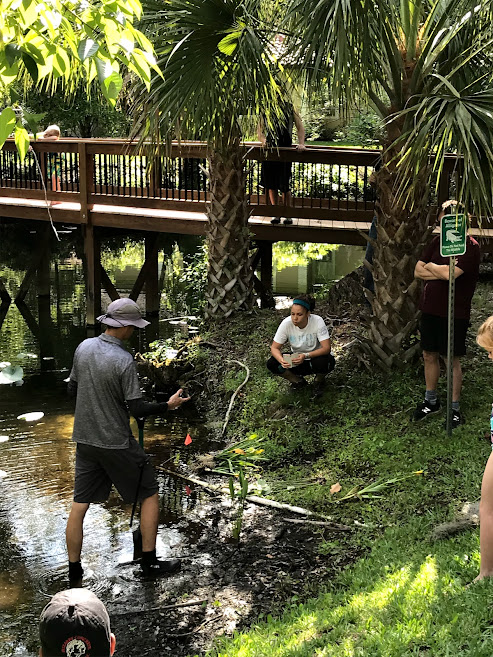As a Floridan it’s not unusual to see bodies of water on your commute to work, walking through your neighborhood or even by/on your school’s campus. It’s most likely that these small waterways are man-made structures put in place to maintain stormwater runoff. In other words, these waterways are more than likely a retention pond.
What Are Retention Ponds?
Initially introduced as a way for stormwater runoff collection, over the years retention ponds have become more and more abundant. In a sense, they do collect all the runoff from the numerous thunderstorms Florida sees throughout the years but that’s all they do.
They collect more and more water with some ponds not seeing an outlet water flow. Without this water flow, retention ponds essentially become stagnant cesspools. Mosquito populations bloom and suffocating algae grows on the surface not allowing any sunlight to reach the bottom.
In Orange County, FL within the past decade there has been over 6,800 retention ponds recorded according to the National Pollutant Discharge Elimination System (NPDES). This number is only a small record of retention ponds. It’s not inclusive to all the countless developments and communities that make their own ponds to control stormwater.
Since it’s nearly impossible to have an accurate record of all the retention ponds within a single county, there could be thousands of retention ponds unaccounted for and not maintained due to the lack of records.
How are Retention Ponds Maintained?
Over time a retention pond requires some upkeep. Trash accumulates, algae forms on the surface, and in some cases dead fish collect along the banks and mosquitoes swarm. The way the county combats this is through extensive routine maintenance.
Orange County Stormwater Management Division uses herbicides that are “far less toxic than herbicides used in most agricultural operations or even those pesticides used in the home”. These herbicides are to get rid of unwanted vegetation and surrounding weeds. These herbicides, however, also get rid of important vegetation within the water that helps control the excess of nutrients preventing algae growth.
Another way to maintain these ponds is by mowing the grass down, prompting erosion to occur and to include carnivorous fish to control the mosquito population. On top of the mosquito pesticides that are sprayed by the Mosquito Control Department.
There are many sustainable and practical options instead of the methods used to maintain these ponds.
What Are the Alternatives?
Retention ponds at the end of the day are still unused ponds but they have the potential of becoming something more.
Sean Patton, a graduate of New College Florida in Marine Biology and Ecology, and founder of Stocking Savvy have developed a long term solution. Habitat restoration.
Make retention ponds healthy ecosystems. By introducing native plant and animal species to these bodies of water they can clean and restore themselves. Cutting the cost of maintenance,
significantly reduce the number of herbicides used and make these cesspools into beautiful ecosystems that bring life back to these waterways.
Stocking Savvy introduces native plants such as Golden Cannas and Fragrant Water Lily, to help slow the process of erosion, prevent large algae blooms and attract pollinators.
Besides plants, they also introduce native fish and invertebrates. Fish populations are controlled naturally through a healthy balance of prey and predator species. Each contributing to algae control, keeping midge fly populations down and controlling mosquito populations. Bottom feeders are also introduced to help the overall quality of the water and aquatic weed populations.
Such species include grass shrimp, Golden Shiners, mollies, mollusks, Livebearers, and the Florida Flagfish. There’s even an option to introduce turtles to help with algae or insects providing not only another benefit but a nice aesthetically pleasing addition.
These changes won’t improve retention ponds overnight. Within a few years and the introduction of these species, slowly the ponds will become self-sufficient. However, the long term effects of this process become a permanent fix to a majority of the retention pond issues.
There’s a real solution to retention ponds that can make for a more environmentally friendly and beautiful alternative to the current control of these ponds.
Take Action
IDEAS For Us – Orlando had an awesome opportunity of organizing a shoreline restoration project in May! Here are a few photos on how they were able to plant over 550 native plant species. Check out our website for more information! https://ideasforus.org


In the thick of it 
Before planting 
Removing Hydrilla
For more information on Stocking Savvy and how to improve waterways in your neighborhood visit http://www.stockingsavvy.com
Sean Patton will be a guest speaker at the IDEAS Hive on November 6, check out the IDEAS Hive tab under the About menu on our website. https://ideasforus.org/theideashive/
Sources:
- http://ocgis3.ocfl.net/Html5Viewer/Index.html?viewer=InfoMap_Public_HTML5.InfoMap_Public
- https://www.stockingsavvy.com/
- https://www.orangecountyfl.net/Portals/0/Library/Environment/docs/StormwaterPondMaintenanceBrochure.pdf
- http://www.orangecountyfl.net/Portals/0/resource%20library/traffic%20-%20transportation/2016%20%20Retention%20Pond%20Maintenance.pdf
- https://plants.ifas.ufl.edu/manage/control-methods/chemical-control/details-about-the-aquatic-herbicides-used-in-florida/












